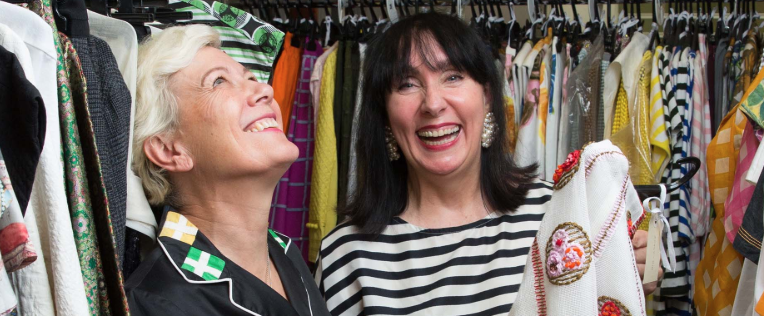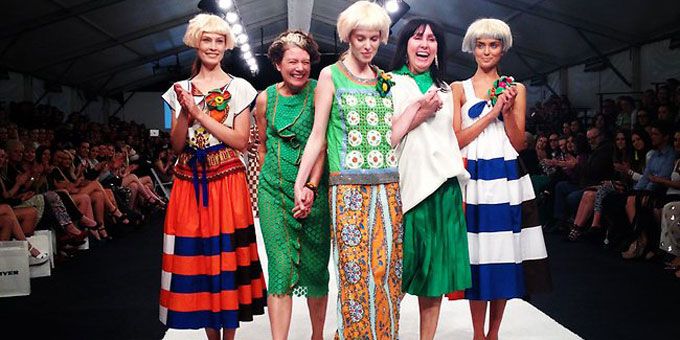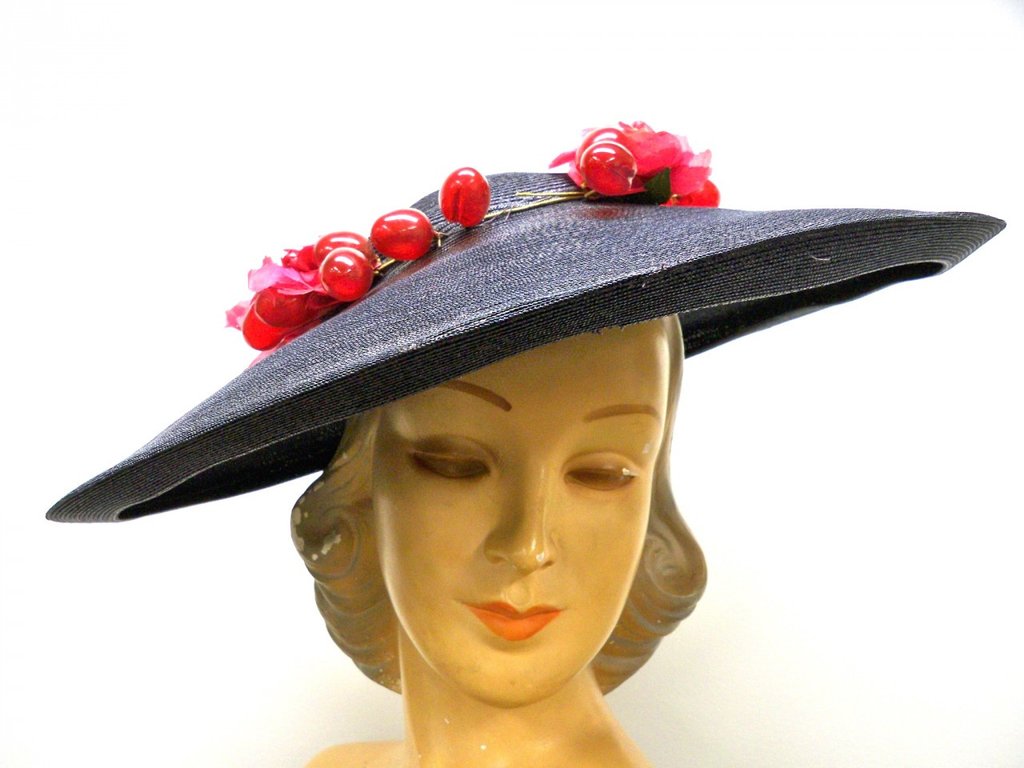EPISODE 62 FEATURES EASTON PEARSON
Pamela Easton and Lydia Pearson co-founded and designed the iconic Australian fashion label Easton Pearson, known for its artisanal fabrics and embellishments, its colourful exuberance and sense of fun.
Now, these two are the subjects of a new show at the Museum of Brisbane, The Designers’ Guide: Easton Pearson Archive. It features 200 garments that: “reveal the artistry, techniques and demi-couture practices that placed the label at the forefront of Australian fashion from 1989 – 2016.”
These pieces have been selected from a massive archive of 3,300 Easton Pearson garments donated to the museum last year. An invaluable resource for fashion students and fashion fans, it’s also an important contribution to Australia’s cultural history.
Clare was asked by the museum to create the audio, with Pam and Lydia, for the exhibition. This Episode is the companion podcast - the whole creative story. Find out why this Aussie icon that sold at Browns in London and Bergdorf’s in New York, was such a big deal. Listen to Pam and Lydia decode their design and making processes, and detail how they started out on the business of fashion, and kept at it for so long.
We talk about how they pioneered and centred slow fashion and ethical production in the Australian context, and also in India, where their main workshop was located. Remember, this was a long time before sustainability or ethical fashion were buzz words. We also have a frank discussion about the challenges of running an independent, slow fashion business in a fast fashion world.
NOTES & LINKS…
FASHION EXHIBITIONS. Once upon a time they didn’t show fashion in museums (except in establishments specifically focused on fashion and textiles). But art museums? The horror that they might mess about with costume or the supposedly less series applied arts! It was Diana Vreeland who changed all this during her tenure at the Met, where from 1973, she staged wonderful fashion exhibits that proved extremely popular, extremely thrilling and serious at the same time.
Today fashion is big business for museums. Alexander McQueen Savage Beauty was the V&A’s most visited exhibition with 493,000 people showing up during its 21-week run.
In New York, more than 1.6 million visitors checked out Heavenly Bodies: Fashion & the Catholic Imagination at the Met this year.
In Australia, the NGV in Melbourne has had some fabulous blockbuster shows, including 2014’s The Fashion World of Jean Paul Gaultier and last year’s big Dior exhibition. (Did you listen to our Episode on this with milliner Stephen Jones? Check it out here.) The NGV also had an excellent show called 200 years of Australian Fashion that opened in 2015 with everything from early dressmakers, through 1950s department store brands to Dion Lee.
Nevertheless, it remains a rarity for one Australian designer or brand to hold down an exhibition. A few exceptions: Toni Maticevski did it at the Bendigo Art Gallery. Akira Isogawa has a show opening at the Powerhouse in Sydney in December. And this is not Easton Pearson’s first museum moment - in 2009 they were also the first fashion designers to have a survey exhibition at the Queensland Gallery of Modern Art.
“IS FASHION ART? THE ANSWER IS, PERHAPS: IT DOESN’T MATTER.” - ROBIN GHIVAN
BRISBANE PUNK SCENE. 1970s Brisbane was fuelled by politics and punk. The state’s infamous premier Joh Bjelke-Petersen’s draconian politics fuelled the city’s underground punk scene. Enter iconic Brisbane bands The Go-Betweens and The Riptides.
Australian art dealer RAY HUGHES opened his first gallery in Brisbane in the ‘70s. The fedora-donning Hughes went on to host shows by Jean Dubuffet, and deal with works by Anish Kapoor and Liu Xiadong. Hughes passed away in December last year, aged 72.
A SAUCER HAT (or ‘cartwheel hat’) is a thing of beauty. Popularised in the 1930s by Ascot race-day goers, think lat and round like a small plate and typically worn on the side of the head. The Duchess of Cambridge is a modern day fan.
Lydia recalls fondly the day she and Pamela first met. “Pam looked like a 1950s fashion plate,” she says. It was those iconic CAT’S EYES SUNGLASSES Pam wore. Think Audrey Hepburn in Breakfast at Tiffany’s.
TRAVEL. The eye has to travel, said Mrs Vreeland. Lydia, however, talks about desiring to travel in order to reinvent herself. We hear about her time dabbling in Parisian life, the joys of the French language, and returning to Sydney with a vision for her own label.
Older Australian listeners may remember SPORTSGIRL in its heyday. It’s where Pamela found her feet as a buyer in the ‘80s. Linda Jackson worked there too - listen to her on Episode 14, “Inventing Australian Style”, here.
L’ECLAIREUR is a luxury Paris boutique (there’s one in Los Angeles now too) that was an early supporter of talents like Yohji Yamamoto and Ann Demuelemeester. BIFFI BOUTIQUES was founded by two Italian sisters in the late 1960s. Known for its flair for the architectural and experimental, today Biffi has five doors across Milan and Bergamo.
MRS B is the fashion industry’s affectionate name for Joan Burstein, doyenne of Browns in London. Burstein believed in Easton Pearson early on. Her eye is legendary - she stocked Alexander McQueen and Christopher Kane before they were names, and bought the whole of John Galliano’s graduate collection.
JOYCE MA is another magic name of fashion retail. Her Joyce Boutiques in Hong Kong paved the way for international designers like Armani, Gucci and Versace to enter the all-important Asian market. Ma has continually been named one of the world’s best dressed women. Joyce Boutiques is now a member of the Lane Crawford Joyce Group.
Read the 1998 New York Times article on Easton Pearson here.
ETHICAL FASHION. A love for hand-loomed fabric and an interest in building intimate relationships with the artisans (including with their Indian garment makers) informed the duo’s business model, as much as their slow approach. “We are not good at commercial, cheap product and we’re not interested in it,” say the designers. The value of true artisanship is clear.
“WE KNEW ALL THE PEOPLE WE WORKED WITH SO WE WERE AUTOMATICALLY INTERESTED IN THEIR WELFARE.”- Easton Pearson
For more information on Pamela’s latest project, Pamela Easton, visit here.
This episode is brought to you by the Museum of Brisbane. The show opens at City Hall, King George Square, Brisbane on November 23 and will run until April 22, 2019. Tickets are available here.
A NOTE ON OUR MUSIC: IT IS BY OUR FRIEND MONTAIGNE, WHO SANG A SPECIAL ACOUSTIC VERSION OF "BECAUSE I LOVE YOU" JUST FOR US. IT'S FROM HER ALBUM GLORIOUS HEIGHTS.
THANK YOU FOR JOINING THE WARDROBE CRISIS CONVERSATION. WE'LL HAVE A NEW EPISODE FOR YOU EVERY WEDNESDAY. CAN YOU HELP US SPREAD THE WORD? WE'D LOVE YOU TO TELL YOUR FRIENDS & LEAVE A REVIEW IN iTUNES.
Until next time,
Clare x







